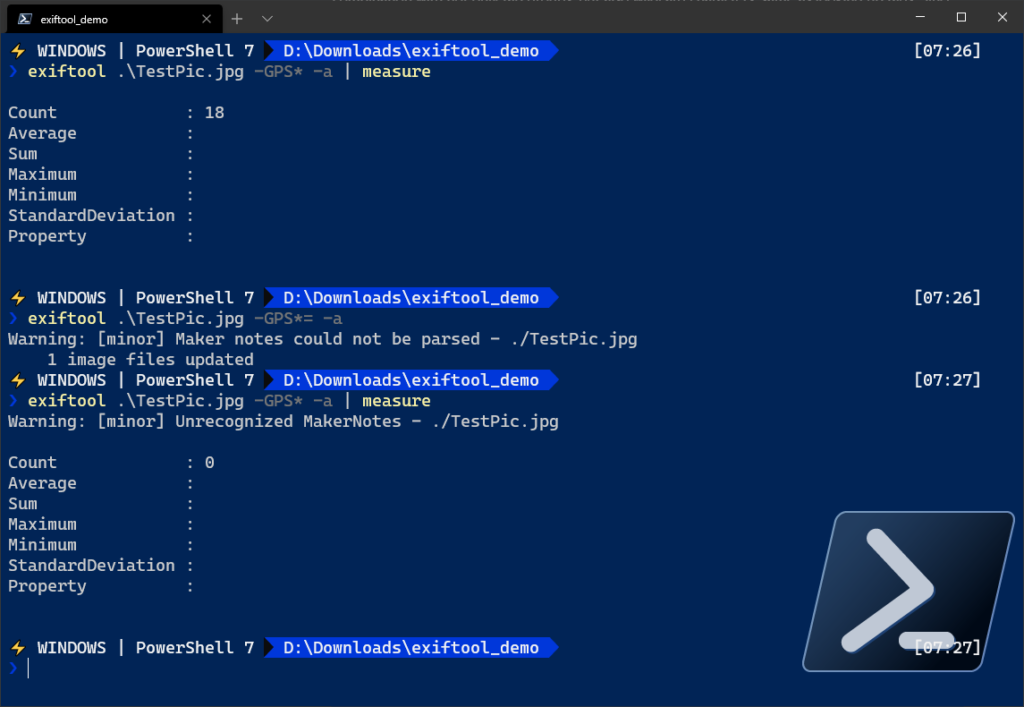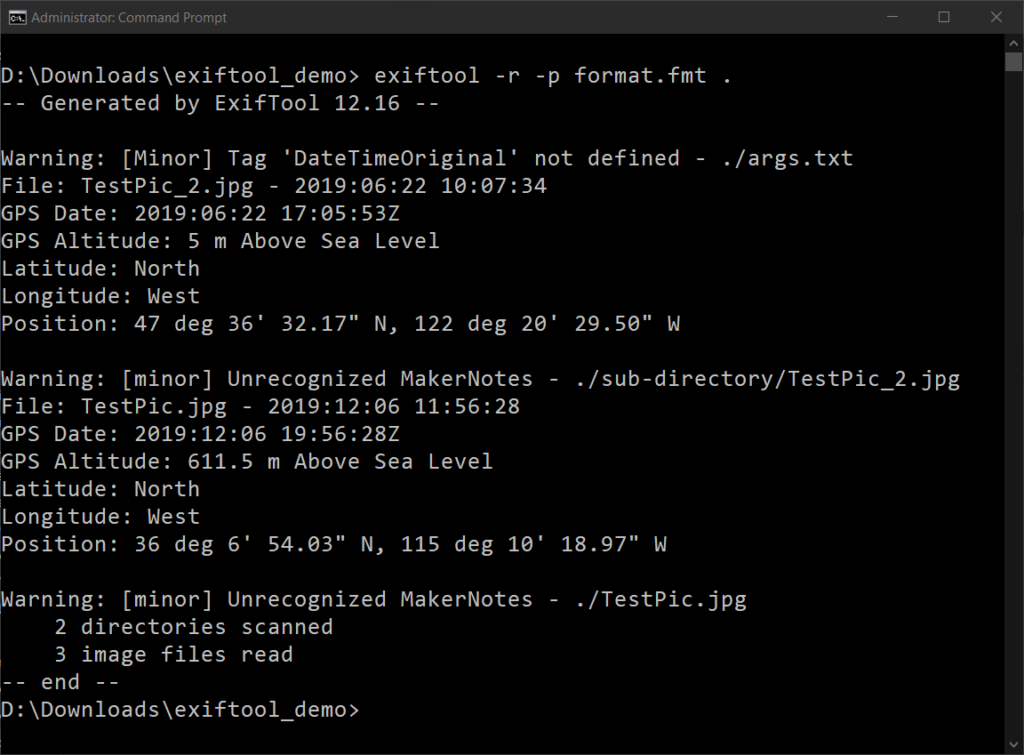


- #EXIFTOOL CREATEDATE ALL 00 HOW TO#
- #EXIFTOOL CREATEDATE ALL 00 FULL#
- #EXIFTOOL CREATEDATE ALL 00 SOFTWARE#
If you plan on trying out anything you read here, you need to know a few things: This guide is going to cover many different ways exiftool can work with metadata.
#EXIFTOOL CREATEDATE ALL 00 HOW TO#
The user forum is a great resource for finding out how to troubleshoot exiftool or understand some of the advanced configurations of it that may not fit in this guide. If you’re stuck on a specific issue while using it, you can also find an active user forum where Phil Harvey himself regularly answers questions. If you want to contribute to the project, you can find exiftool on GitHub with instructions on how to build and start using it.
#EXIFTOOL CREATEDATE ALL 00 SOFTWARE#
Exiftool is meant for a layperson to query and transform metadata without having to be a software developer.Įxiftool is also open-source. You can also write your own logic and specify different conditions across entire libraries of images without having to use any kind of shell scripting. You can even define custom tags too!Įxiftool does more than just read tags though.
#EXIFTOOL CREATEDATE ALL 00 FULL#
You can find the full list of file and metadata types that exiftool supports here.Įxiftool is a tool with an enormous array of features able to work with over 23,000 tags over 130 different groups. Since then, exiftool has become the go-to tool for working with metadata at the command line due to the vast array of file formats and types of metadata it supports. You’ll see that tags and exiftool go hand in hand! What is exiftool?Įxiftool is a command-line utility, technically a Perl library written by Phil Harvey first released in 2003. You can find a full list of all tag groups in the exiftool documentation. Groups are also categorized into one of seven families depending on what information is defined in each group. These groups can have different lists of tags and set how those tags are defined within the group. Tags are classified into groups, like DICOM and EXIF. The Flash example described above fits in with the EXIF standard. Similarly, the EXIF standard dictates metadata schemas for classifying images and sounds recorded by digital cameras. If tag holding a medical diagnosis embedded in an x-ray image got changed accidentally, that’d be bad. You can add some custom tags not defined by the DICOM or EXIF standard in exiftool and change many tags but not all. The DICOM standard dictates that the image supports tags like the attending physician’s name, procedure date, and exposure length. These standards define tag “schemas” that dictate the tags assigned to specific filesįor example, metadata on an x-ray image taken at a hospital or medical center will follow the DICOM standard. For example, two of these standards are Digital Imaging and Communications in Medicine ( DICOM) and Exchangeable image file format (EXIF). Having this standard set of values for tags allows exiftool users to know what values are available for specific tags. This Flash tag example has a defined set of values it can have 27 to be exact. The Flash tag may then have a date value that indicates when the picture was taken. When you do, your phone may store the picture and embed a metadata tag in the picture named Flash. For example, perhaps you take a picture with your phone. Tags are key-value pairs embedded into files that store information about that file. Tags are extremely important to understand as nearly everything in exiftool comes back to metadata tags in some way. Metadata is stored in these files as metadata tags or just tags. Metadata is information embedded into documents and media that are typically hidden from view. Translating Tags into Different Languagesīefore you can understand how to use exiftool, you must understand metadata.



 0 kommentar(er)
0 kommentar(er)
